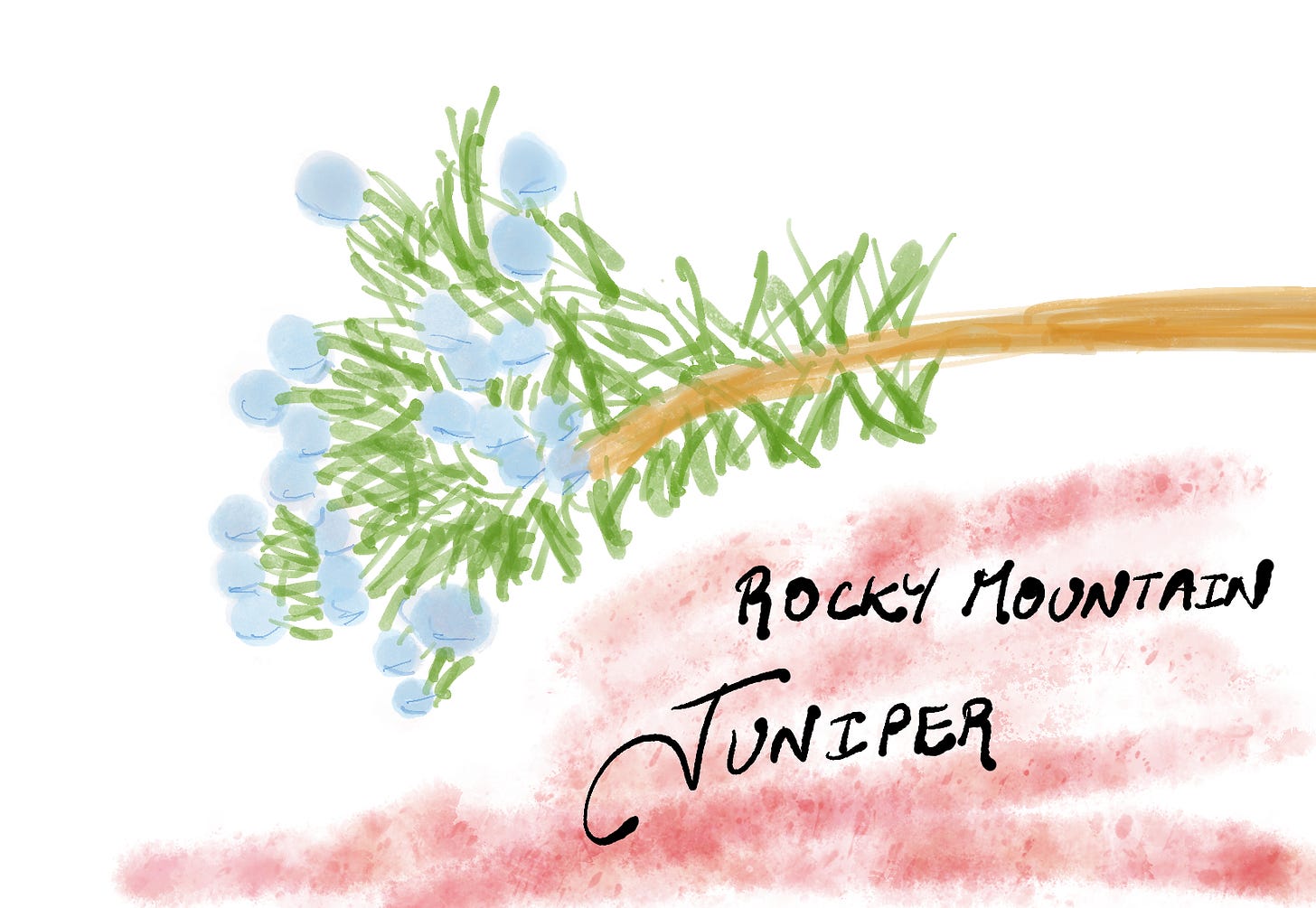124: Rocky Mountain Juniper, Utah Juniper, and One-Seed Juniper
Can you make gin from these? I tried with a Utah Juniper and it was awful but let me know if you had different results
Today’s living creature is our first flora, rather than fauna. The three juniper species in Colorado keep coming up in descriptions of animal habitats, and I know very little about plants, so I wanted to take a closer look at this one. There are between 50-70 known juniper species; they are related to cypresses; and some of the highest altitude trees in the world are junipers located around 16,000 feet above sea level in the Himalayas. The junipers of Colorado also like a high altitude lifestyle, living between 5000-8000 feet above sea level.
Junipers live alongside Piñon pines at that altitude, in dry (10-15 inches of rain per year) and frequently cold conditions. This type of mixed woodland is found throughout much of the state. The height of the junipers is influenced by how much moisture they can get, so while they are able to grow above 30 feet tall, they are more likely to be around 15 feet tall. They grow slowly, and can live 250-300 years in the wild. They are easily spotted in nature because of their blue-grey-purple juniper berries. These berries are actually miniature pine cones, with the scales having grown together to form a hard, round ball. Berries take one to three years to mature. Although they are actually cones, the berries act like fruit in that they attract animals who eat fruit and get them to disperse them.
When these trees are young, they grow in the conical pine tree shape that I was obsessed with drawing as a child (I was very into drawing Christmas trees), but as they age, they can grow into wonderfully gnarled, twisted shapes.
Lots of animals love Colorado’s junipers, including rare birds like the Vireo, and elk, bighorn sheep, deer, and pronghorns all eat the foliage.
Of course, like everything else, junipers are susceptible to climate change. The hotter, drier summers that we are experiencing now have caused them to change color in southwestern Colorado, which is probably a sign of stress.



